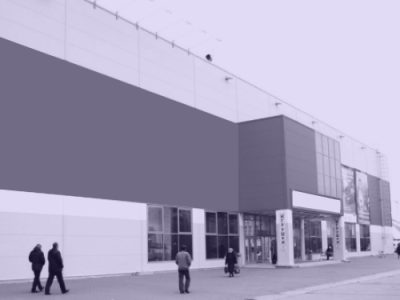Retail Trends 2025: How Technology and Consumer Behavior Are Shaping the Future of Shopping
Our Clients
Committing to the success of our clients around the world
In 2025, retail trends have stopped being just a buzzword and have become the “operating firmware” of the industry. Data from shelves, dark warehouses, courier apps, and IoT storefronts flows into the cloud, where AI algorithms in real time regulate inventory, pricing, and delivery schedules — enabling retailers to maintain margins amid rapidly rising customer expectations.
Why 2025 Will Be a Turning Point for Retail
Economists call 2025 the “year of synchronization”: technological maturity, a new investment logic, and transformed consumer habits have converged. 5G now covers 90% of cities; the cost of cloud TFLOPS has dropped by 70% in five years, making computer vision and ML recommendations affordable even for neighborhood stores without their own IT departments.
At the same time, the ROI per square meter of a robotic fulfillment center has for the first time surpassed that of building a new hypermarket — shifting “concrete” budgets toward automation. Meanwhile, the shopper has “caught the speed”: 57% of city dwellers now choose a retailer based on guaranteed “hour-by-hour” delivery rather than the lowest milk price.
The numbers confirm the shift: mobile app conversion rates in chains with personalized storefronts have risen by an average of 15%; warehouse automation cut operating costs by 8%; and the accuracy of graph-based ML demand forecasts grew by 20 percentage points, freeing up to 12% of working capital. The new balance is clear: speed drives loyalty, data feeds margins, and investment flows into digital, not concrete.
The New Retail Standard
The old formula — “product + price + shelf” — no longer satisfies the customer; what matters now are speed, emotion, and ecological transparency. The answer is the hybrid store-studio: part showroom, part pickup point, part content stage, with the salesperson transformed into an expert consultant.
At the heart of the model is the store’s “digital twin”: sensors count visitor flow, temperature, humidity, and shelf load, while AI suggests where the fresh zone is overheating and where to move a “hot” SKU.
Core pillars of the model include:
-
End-to-end personalization: mobile storefronts and electronic price tags instantly adapt to the guest’s profile, while dynamic pricing considers loyalty status and local demand.
-
Instant payment: biometrics and Pay-by-Link reduce checkout to 10 seconds, eliminating the irritating cashier barrier.
-
Transparent supply chain: one QR code reveals a product’s journey from farm to shelf, showing the supplier’s fair price and carbon footprint.
The practical outcome is tangible: the average basket grows by 7–9%, NPS stays above 70, and the store space becomes a stage of impressions rather than a warehouse of boxes. This is how retail trends are setting the new “store-as-a-service” standard.

Omnichannel Evolution and Seamless Customer Journeys
A seamless customer journey is no longer about “website + offline” — it’s about a unified data core where logistics, marketing, and physical locations are synchronized to the second. A shopper sees a product in a short Reels video, “tries it on” with an AR filter at home, pays with one click in a messenger, and receives it from a robotic locker downstairs — without ever touching a cash register.
This “invisible” route rests on three key processes:
-
An intelligent router selects the optimal dark store in 250 ms.
-
The courier’s route is recalculated in real time based on traffic and weather, saving 15% on last-mile costs.
-
The central store transforms into a service hub — customizing sneakers, repairing gadgets, and hosting live streams, turning square meters into media.
The shift is measurable: +11% conversion across touchpoints, –15% logistics costs, and returns dropping to 3.5%. The shopper passes through the entire funnel without noticing where channel A ends and channel B begins.
Sustainable and Ethical Retail
Generations Z and Alpha see the carbon footprint as a new currency, and ESG metrics have moved right onto product labels. Retailers are investing in several directions simultaneously — each yielding both financial and reputational results:
-
Reusable packaging and real-time sorting have cut organic waste by a quarter.
-
Blockchain contracts guarantee farmers fair prices and eliminate child labor.
-
Part of the revenue funds urban green projects, and customers can see their personal contribution in the app.
These initiatives translate directly into sales: according to PwC, 62% of shoppers under 30 are willing to pay up to 10% more for a product with a transparent “green” history. Sustainability has thus stopped being an expense for a report and become a source of additional margin.
Immersive Retail Experiences and the Rise of Experimental Commerce
The sales floor is no longer a warehouse with price tags — in just a few years, it has become a stage where brands orchestrate emotions and shoppers willingly take part. The main goal: engage all the senses so that the purchase decision becomes a natural continuation of emotion.
Most of the day, the space works as a showroom; in the evening, it transforms into a club zone or cooking studio; at night, it serves as a set for content shoots. The art of experience relies on technology — but the real value comes from the combination of script, light, sound, and personal data gathered before the visit.
Three tools have become standard practice:
-
AR/VR try-ons bring sofas, bikes, or dresses into real interiors, reducing large-item returns by over 30%.
-
Sensory installations with scent capsules and zonal 3D audio increase dwell time by 25%, taking the visitor beyond their shopping list and boosting impulse sales.
-
Culinary or DIY shows turn ingredient purchases into stories: a chef-blogger cooks live, while the stream instantly sells a “recipe basket” online; user-generated content ensures organic reach without extra SMM spend.
Such formats lift the average basket by 6–8%, create associative brand memory, and generate content that attracts new visitors at a lower cost than traditional targeting.

Social Commerce and Creator-Driven Sales
Social networks have become the place where inspiration, checkout, and delivery coexist in one window. The influencer’s role has evolved beyond ad integration — they’ve become a full-fledged sales channel. Essentially, the opinion leader is a licensed merchandiser with a personal pavilion in their followers’ feed.
This is where retail trends take on a human form: trust in a person replaces cold banners, and feedback instantly turns into a sales metric.
Retailers turn audience loyalty into revenue through three main tactics:
-
Embedded shoppable streams: the path from “want” to payment takes two taps, boosting conversion by 30% compared to landing pages.
-
Micro-influencers (5–30k followers): deliver 25% lower CPA than standard targeting because niche audiences treat recommendations like advice from a friend.
-
AI-edited highlights: automatically post Reels within a minute of the live stream ending, re-engaging viewers via retargeting and adding another 3–4% in post-sales.
The commercial impact is clear: advanced retailers now generate up to 12% of revenue from social commerce, while media costs drop since the content is created by the users themselves.
The Role of Big Data and Predictive Analytics in Retail
Each purchase generates over a hundred events — from RFID tags to POS APIs — and only a clean, unified data layer can turn these fragments into cash flow. Once the data orchestrator merges transactions, IoT device logs, and mobile app behavior, predictive models come into play: some calculate price elasticity, others forecast churn, and others optimize pallet layouts across warehouses.
The logic unfolds across four main scenarios:
-
Graph models reveal hidden SKU relationships and dynamically redistribute stock between warehouses hourly, cutting out-of-stock rates by up to 30%.
-
Dynamic pricing adjusts labels for weather and competitor promotions, increasing margins by 2–3 p.p. without reducing demand.
-
Churn-risk forecasting catches customers “on the edge,” recovering up to 18% of users with timely micro-bonuses.
-
What-if systems test hundreds of promo scenarios in minutes, filtering out unprofitable ones before launch and boosting marketing ROI by 20%.
As a result, receipt databases become strategic assets: write-offs fall by 15%, capital turnover accelerates, and data becomes the fuel for continuous customer experience upgrades.
Preparing for the Future of Retail: Strategy and Adaptation
Each new market cycle emerges faster than old processes can adapt — so long-term resilience depends on a culture of continuous experimentation. What matters most is not the number of technologies but the flexibility of the organizational “skeleton.”
Retailers are adopting a best-practice approach built on three layers:
-
Agile organization: cross-functional sprint teams take full KPI blocks and test hypotheses “from idea to metric” in 2–4 weeks, matching the speed of change to the speed of thought.
-
Platform architecture with open APIs: any new service — from “buy now, pay later” to ESG tracking — integrates seamlessly, reducing time-to-market to weeks.
-
Upskilling programs: employees are trained in dashboard reading, ML basics, and AI ethics, enabling data-driven decisions and maintaining customer trust.
This “three-layer structure” makes a company future-proof: innovations reach the sales floor faster than competitors, assortments flexibly follow trends, and the brand stays ready for the next wave of retail trends — without wasting money on costly “redesigns.”
Success Stories
 Allis
Allis
 Coca Cola
Coca Cola
 Perfetti Van Melle
Perfetti Van Melle
 Nestle
Nestle
 Danone
Danone
 Mars
Mars
 Tarweej
Tarweej
 TOP 3 Retail Chain
TOP 3 Retail Chain
 Global Retail Corporation
Global Retail Corporation
 World’s Leading Manufacturer
World’s Leading Manufacturer
 Global FMCG Brand
Global FMCG Brand
 Leading Food Manufacturer
Leading Food Manufacturer
 Global Food Manufacturer
Global Food Manufacturer
 Global Coffee Manufacturer
Global Coffee Manufacturer
 Major Spirits Producer
Major Spirits Producer
 Global Pharmaceutical Brand
Global Pharmaceutical Brand
 Leading Food Manufacturer
Leading Food Manufacturer
 Global FMCG Brand
Global FMCG Brand
 Leading Food Manufacturer
Leading Food Manufacturer
 Leading Spirits Producer
Leading Spirits Producer
 Major FMCG Brand
Major FMCG Brand
 Major Coffee & Tea Manufacturer
Major Coffee & Tea Manufacturer



















